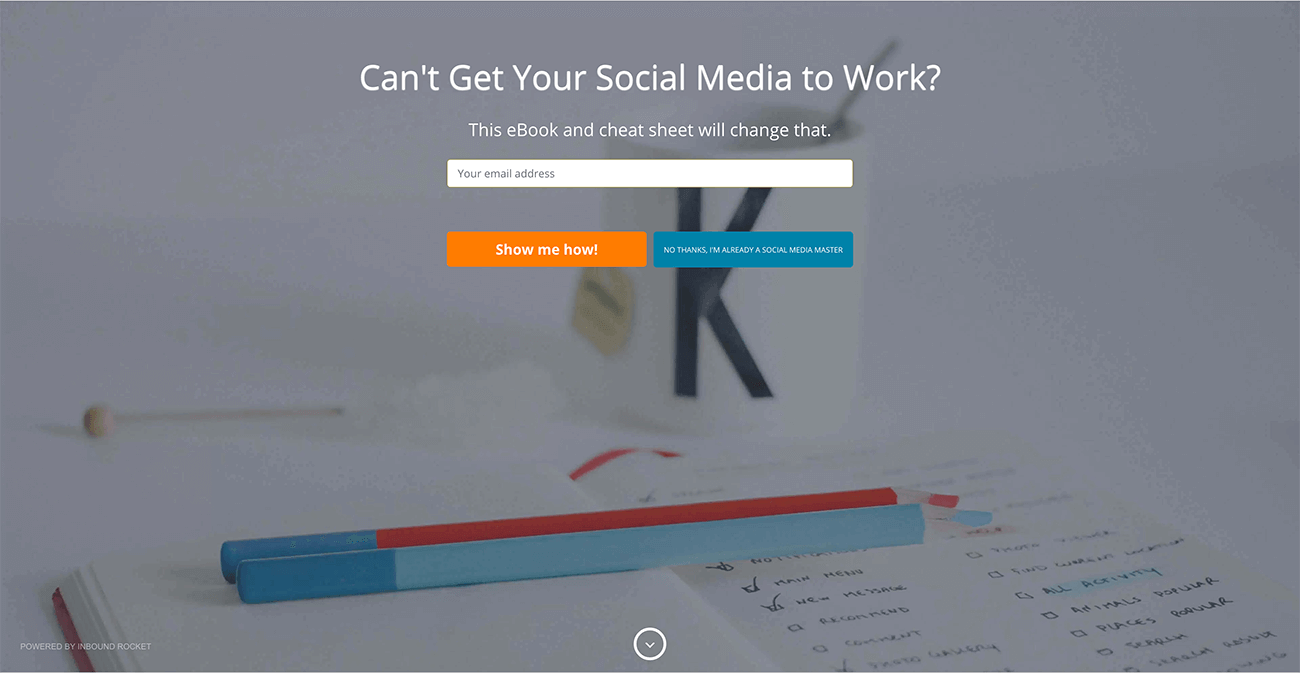
A lead magnet that generated 40k leads in just 60 days. Sounds nice, right?
You will often find something like this in every other article that touches on the subject of lead magnets. Another thing you will usually see is numerous examples with short descriptions for each presented type.
While examples are a great way to add value to any subject you are trying to explain, in this case, you need to have more substance on how to create and present lead magnets if you want to see any significant success with them.
This article aims to fill that gap.
We will cover:
- what kind of content is an excellent candidate to be transformed into a lead magnet
- how do lead magnets fit into the content marketing funnel
- what to concentrate on when developing a lead magnet
- what actions do you need to take in the post-production phase (promotion, testing, analysis)
Lead Magnet Types
Before we go any further, let’s make a short stop and explain what exactly are lead magnets.
Lead = potential customer; contact info
Magnet = attraction
In layman’s terms, the lead magnet is an irresistible piece of content you offer in exchange for a person’s contact information.
Content can come in numerous shapes and sizes so it shouldn’t be surprising that there are multiple types of lead magnets out there.
Even though we can’t write down every possible lead magnet type, it is still worth looking at the most common ones. We grouped them according to their similarity.
- Checklists/Cheatsheets/Workbooks
- Templates/Swipe files
- Toolkits/Resource lists
- Webb apps/Generators
- Calculators/Quizzes/Social media contests/Surveys
- Ebooks/Whitepapers/Guides/Case studies
- Reports/Research results
- Audio tutorials/Video tutorials/Webinars
- Coupons/Discounts/Catalogue/Giveaways/Free shipping
- Free trials/Free software download
One thing that is not on this list and worked surprisingly well for lots of different people is the option to download the content in PDF format, also known as a content upgrade (here is Brian Dean’s take on it).
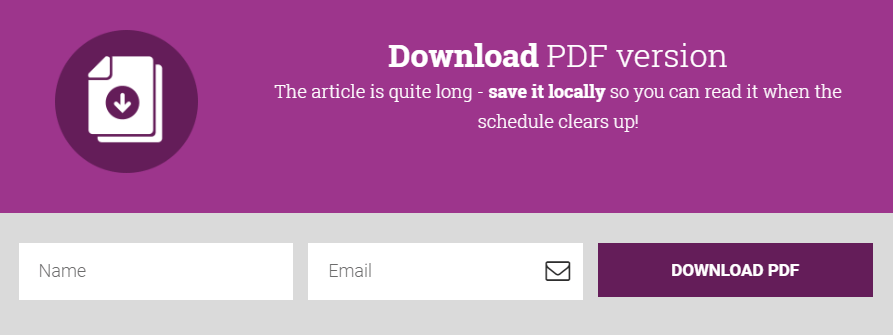
The idea is that whenever you post a long-form guide on your blog, always give the reader the option to download a PDF version of the article.
Out of the items on the list, one of our favorites are quizzes and surveys they are excellent tools for generating new leads. You may develop an entertaining one, integrate it into your WordPress website, and require to fill in the email address before presenting the results. I advise you to try the WordPress quiz plugin for that.
Before we move on, remember this – you don’t need to conform to the standard types. If you have something unusual you can offer that could be worth exchanging contact info for – go for it. Who’s to say you can’t come up with your lead magnet type!
The Role Of A Lead Magnet In The Marketing Funnel
Getting people to your blog or homepage is a great start, but if that is their only contact with your business, they probably won’t be converting any time soon.
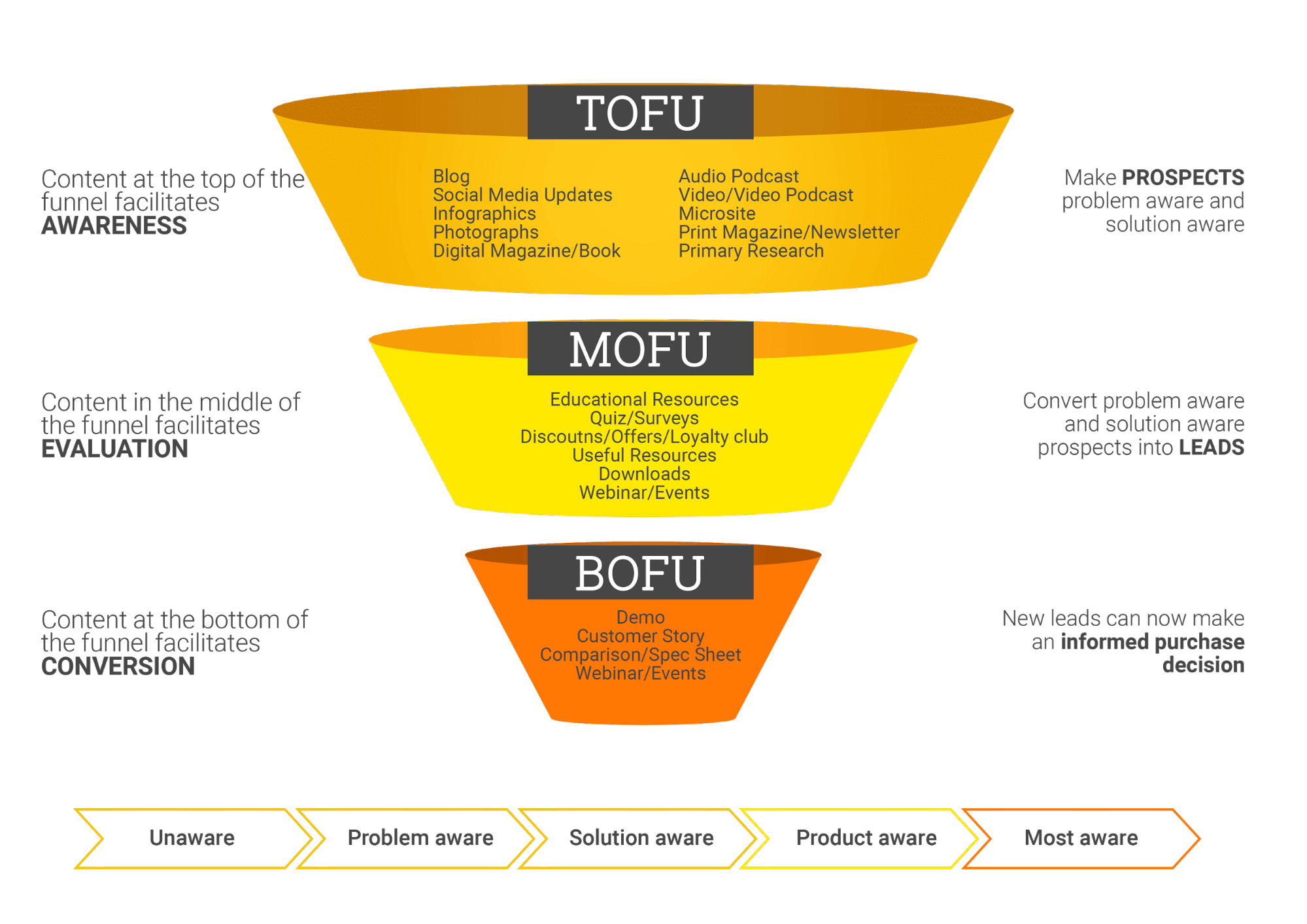
You need some incentive to pull the casual visitor into your marketing funnel. This is where the whole idea behind lead magnets started. It acts as a bridge that transforms prospects into leads.
While a prospect is on your website looking at some related content, you subtly poke him with an exciting offer: “Hey there, I see you like designing custom featured images for your blog posts, maybe you would have a use for this huge list of design resources?”
Now that you have their contact info, you can worry about what type of content to use to guide them down your sales funnel.
Development Phase
Depending on the lead magnet type you chose to go with, the development process can take from 30 minutes up to tens of hours.
However, you shouldn’t have a preconceived notion that effort equals results.
Look at it this way.
Let’s say you use a unique template for some part of your process that proved to be very successful. You decide to, slightly modify it and use it as a lead magnet. Or, you choose to do interesting research and offer the results as the lead magnet.
While the research will undoubtedly take more time to conduct and present, you don’t have any guarantee that it will perform better than the template.
Not to say that time-demanding lead magnets aren’t worth it, just something to keep in mind.
Starting line
As we already discussed, lead magnets need to offer enough value so that a prospect is willing to give you his contact information to can gain access to the thing you’re offering.
Before you go any further, you need to conduct a proper target audience analysis.
The main reason you need to know your target audience is that having quality content isn’t enough to convert. You can offer hall-of-fame-worthy content, but if that content doesn’t cover something your prospect is interested in, you aren’t going to get his email address.
Additionally, you want to grow your contact list with names that are interested in your product. That is why you want to align your lead magnets with your product/service. While growing your email list with general-purpose content that appeals to a broad range of audiences isn’t out of the question, that won’t necessarily lead to a noticeable sale spike in the future.
Take this infographic on how to create great content for example. The infographic is followed by a lengthy post that describes the whole process in more detail. In the appropriate section (and as a pop-up) you will find this lead magnet: “100 Free Graphic Resources For Social Media & Blogging”.
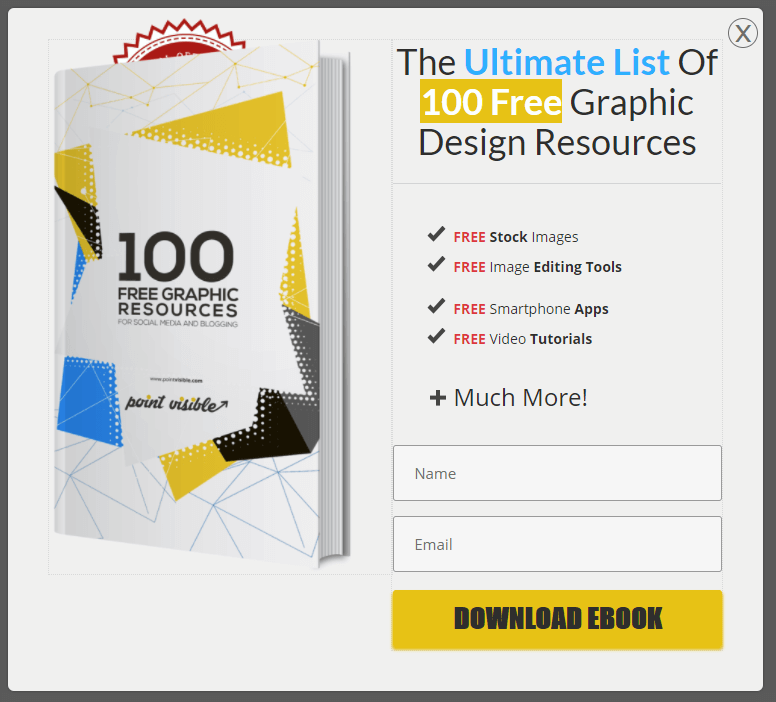
Let’s assume your target audiences are bigger marketing agencies and small to medium businesses. If you are using this particular lead magnet, you should immediately notice how it might appeal to a much broader audience. As you can imagine, something like this will also attract the attention of many bloggers and content creators.
If you’re looking to create a list that comprises strictly from qualified leads, you may want to take a more personalized approach and offer something that helps with a specific problem your target audience has.
Characteristics Of A Great Lead Magnet
- Solves a problem. This is a no-brainer. Whatever you offer needs to be helpful in some way. Another thing you will often find as a characteristic is that a lead magnet should bring value. Helpful content that solves a problem is inherently valuable, so you’ve got that covered!
- Focuses on one specific thing. The most successful lead magnets are the ones that help you solve a specific pain point. This also helps you to fine-tune your aim and target specific groups of people.
- Can be quickly consumed. This is why templates and checklists work very well. You can download, open and test them in just a few minutes. Not to say that you should completely disregard things like Ebooks and whitepapers – it all depends on your target audience. However, we can’t deny that shorter things like templates and checklists are the safer approach.
- Is easily implemented. If the lead has to do additional research to implement your advice then you didn’t do a very good job with your lead magnet and you didn’t respect the previous points. It has to be practical to use.
- Is instantly accessible. Don’t make your leads jump through hoops to get the lead magnet. Make sure it is delivered promptly. Our attention span is lower than ever, and you don’t want someone to lose interest before he had a chance to view your advice.
- Demonstrates your expertise. A good path to converting a lead to a customer is to show them that you know what you’re talking about.
- Is visually appealing. Don’t forget about the design. While the substance is more important than the overall looks, having something that is nice to look at definitely doesn’t hurt. Additionally, it will help build brand image and trust us you’re showing your attention to detail.
“Packaging” Guidelines
There is no other way around it, the packaging is important. If you’re only interested in growing your email list, it is probably even more important than the quality of the content it contains.
The importance comes from this – packaging is the only thing the prospect has to evaluate your offer. At this point, he can’t know if you are going to deliver what you promise.
To persuade them, you need convincing packaging.
There are three elements you need to concentrate on:
- name of your lead magnet
- the message that follows it
- overall design
Naming guidelines
Guidelines for naming your lead magnets are somewhat similar to the ones you would be using for naming your blog posts.
You can take a few different paths here.
Descriptive approach
- 10 Guest Post Pitch Templates That Are Proven To Work
- Optimize SEO checklist: How To Fully Optimize Your Site for SEO
A minimalistic approach to entice curiosity
- 52 Headline Hacks
- Getting Links Without Building Them
Mention a shocking number/statement
- How To Get 20k Leads In Just 30 Days
- Improve Your Conversion Rate By 50%
Note that sometimes you don’t really have to have a title for your lead magnet and you can jump straight to the message you want to convey as ListGoal did in the example below.
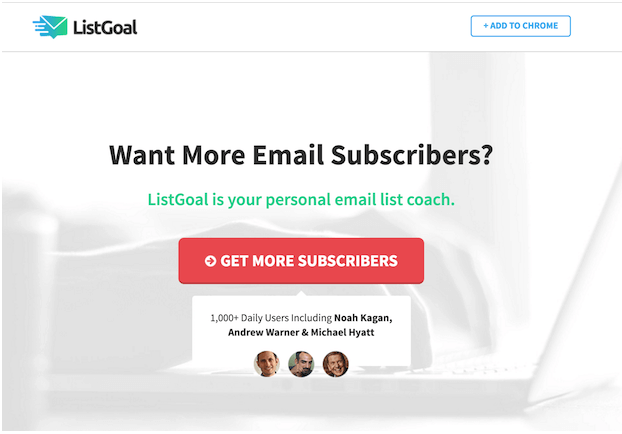
The surrounding message
This section covers all of the text that isn’t part of your lead magnet name. You can look to cover a few different things here, depending on how much room you have to work with (you can fit way more information on a landing page than you can on a simple pop-up).
State the pain point
- Are you having trouble pitching your ideas?
Mention information the lead magnet contains
- Pitch elements, templates, tips, and warnings
Articulate the desired result
- Quickly improve your pitch writing skills with this free guide.
Include trust builders
- Testimonials
- Certificates/badges
- Anything else that proves you’re an expert in the field and qualified to help
The overall design
Having good-looking and well-thought-out landing pages and pop-ups is necessary because they are essentially your salesperson.
Every message you write, every color you use, and every vector you design should have one goal in mind: to convince the visitor that it is something they need right now. They have a problem – you have a solution.
Here is an example of a landing page that follows this advice.
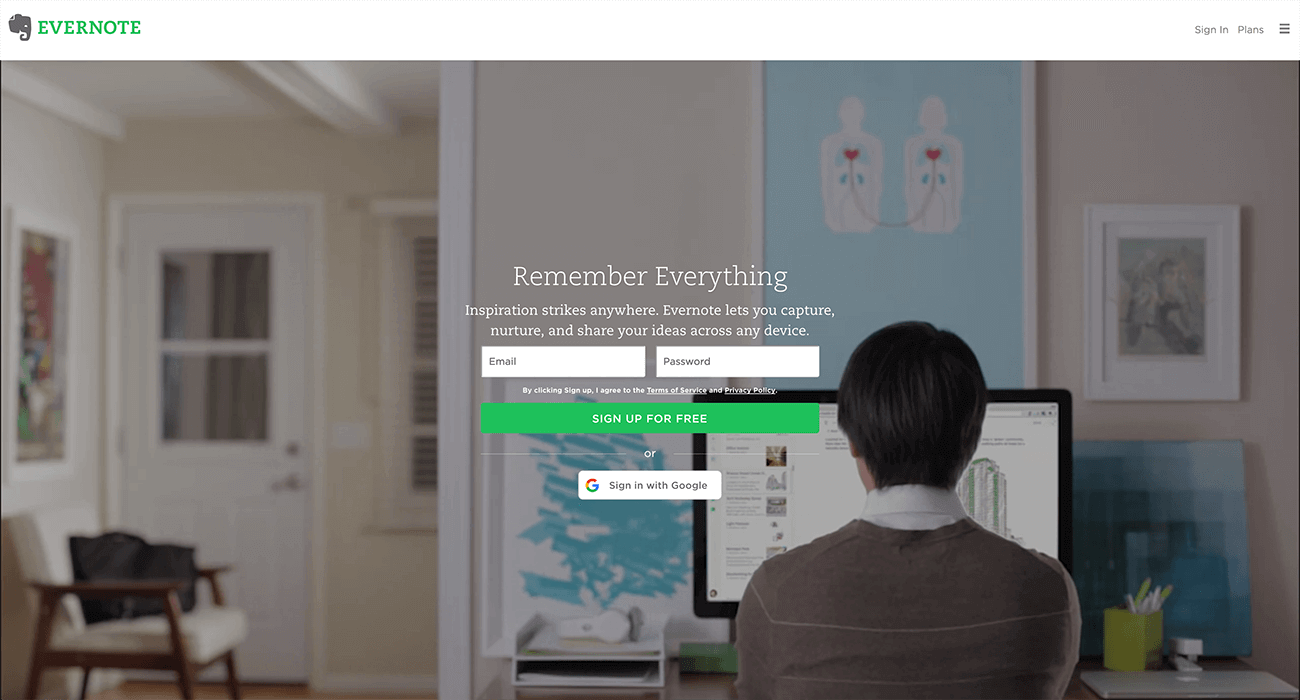
We will discuss the design guidelines in more depth in the next block but let’s go over something that isn’t mentioned there.
The first one is CTA. Your Call-To-Action button needs to be designed in a way that it draws the eye in. If the prospect has to search for it, you just failed your “CTA design 101”.
The second thing you might want to pay attention to is using the design to emphasize certain words. You can do that by changing the color or playing with different font properties.
More general design guidelines one wheel scroll down 🙂
Visual & Branding Guidelines
We already mentioned how designing visually appealing content comes with its own set of benefits. Here are a few simple directions you can follow even if you aren’t the most creatively gifted person out there:
- Have a clear structure with no overlapping elements
- Avoid clashing colors and restrict to using 3-5 different colors
- Respect the contrast (dark background/bright text color or vice versa is the simplest way to ensure that everything is clear and readable)
- Let it flow (to make it easy to follow avoid things like big chunks of text and poor symmetry between elements)
- Use appropriate fonts (the font has to be easy to read and reflect the (in)formality of the content you are offering and the audience it is intended for)
- Create a theme (can be a nice touch but it is completely optional; like a blackboard background with a “chalk” text in the example below)
If you’re looking to get even more value from your design efforts, you can look to incorporate different branding elements into your lead magnet designs (or as a matter of fact, into every piece of content you create).
So, how does one build brand trust and awareness through design?
I’m glad you asked. It is quite simple:
- leave your logo/slogan whenever you can (in a subtle, non-intrusive manner)
- use brand colors in your designs
- insert a link to your homepage (make it clickable if the lead magnet is in the format that supports it like .pdf)
Here is the head page from one lead magnet that demonstrates this well:
Presentation options
Here are the most common ways to get the lead magnet in front of the eyes of your visitors:
- Pop-ups. Pop-ups are an interesting option because of the versatility they provide. The main thing you should be careful about is coming across as pushy or annoying. To avoid that, you can play with:
- Size of the lead magnet offer
- Animations (slide-in, bounce-in, fade-in, etc.)
- Timing (they can appear after the visitor spent x amount of time on the page, scrolled for x amount, wants to leave the page…)
- Number of times it shows itself to the same visitor in a day (for returned visitors)
- A/B Testing (different test designs for the same lead magnet offered to see which one performs the best for your target audience)
- In-text. In-text lead magnet offers are pretty popular right now. You can find them in more bigger guides on the net. They work well because they can be used with any lead magnet type, are more subtle than pop-ups, and don’t break your flow with whatever you were doing (most likely reading an article).
- Landing page. Landing pages can be a great way to present your lead magnets because you have a bit more room to work with than you would have a pop-up or an in-text offer. That means you have more space you can use to convince the visitor that this is something they need. We won’t go into details about how to create a high-converting landing page as that can be a post for itself.
- Resource page. A resource page is a viable option when you have several lead magnets ready (preferably of the same type). The most common ways business utilize it is to have all of the lead magnets in one place that people can look over and download right away (which doesn’t mean you can’t have the same lead magnets included elsewhere on your website). Here is a great resource page example from ActiveCollab (a project management tool).

By clicking on any of the guides, you are seamlessly transferred to the respective landing page. - Banners. If you want to get a bit more flashy, you can design static or animated banners that lead to the landing page. You can use the banners on your website, on guest websites or as your signature if you are active on some forums in your niche that allows it.
Promotion
The most straightforward way to promote your lead magnets, which work with practically any type, is to mention them on your social media channels and guide the prospects to where it can be downloaded.
As a more advanced technique, you can use sponsored posts or some other form of paid promotion. If you go down this road, it is a good idea to make a landing page so that all of that traffic leads (no pun intended :)) to that specific landing page.
The last thing you can do is what we like to call indirect promotion. If you have some content in which you included your lead magnets, you can go and promote that content. Every visitor that comes and checks it out will also see your lead magnet.
Don’t Forget To Test, Analyze & Adapt!
Making high-converting lead magnets is challenging. Sometimes, just a minuscule thing like the font you chose or the color you used can have an impact on the conversion rate.
That’s why it is always recommended to make a few versions of your landing pages and pop-us and do some split testing. When you have a firm grasp on which headlines, call-to-actions, color combinations, etc. work best, you can make the final version and use it to attract a bunch of new leads.
All good things have to come to an end. We hope that you now have a better sense of what makes a good lead magnet, in which directions you can go with it, and what elements do you need to concentrate on to create a high-converting lead magnet.
Before you leave, don’t forget to tell us in the comments what was your most successful lead magnet so far!
 This is a guest post by Dario Supan. Dario is a content marketer and editor at Point Visible. Aside from taking care of blogger outreach projects and creating helpful blog posts, his interests are related to graphic and web design. He occasionally throws in an on-page SEO project, just for good measure.
This is a guest post by Dario Supan. Dario is a content marketer and editor at Point Visible. Aside from taking care of blogger outreach projects and creating helpful blog posts, his interests are related to graphic and web design. He occasionally throws in an on-page SEO project, just for good measure.
